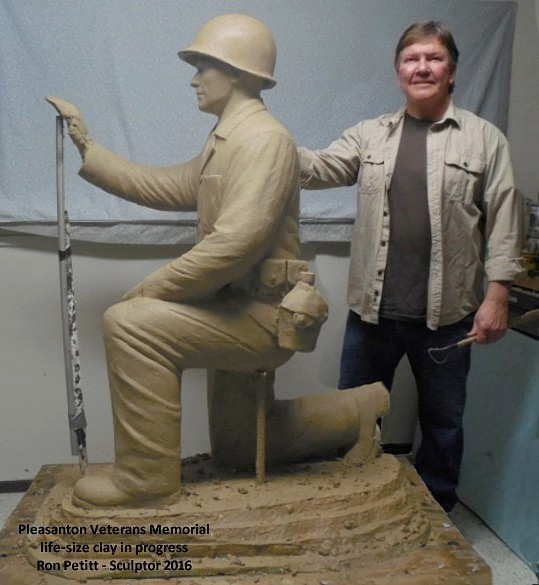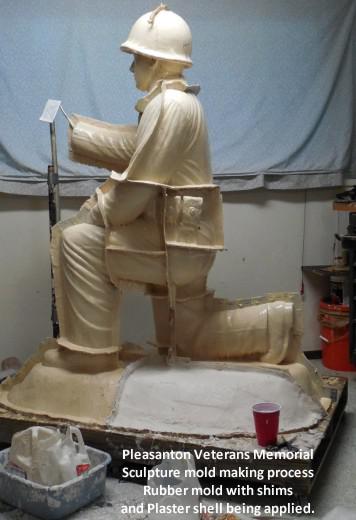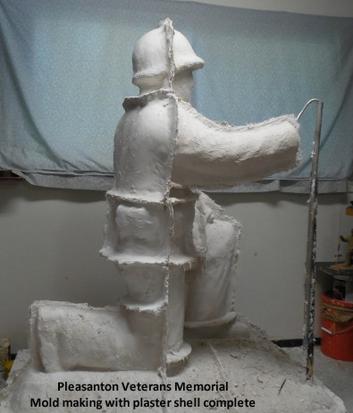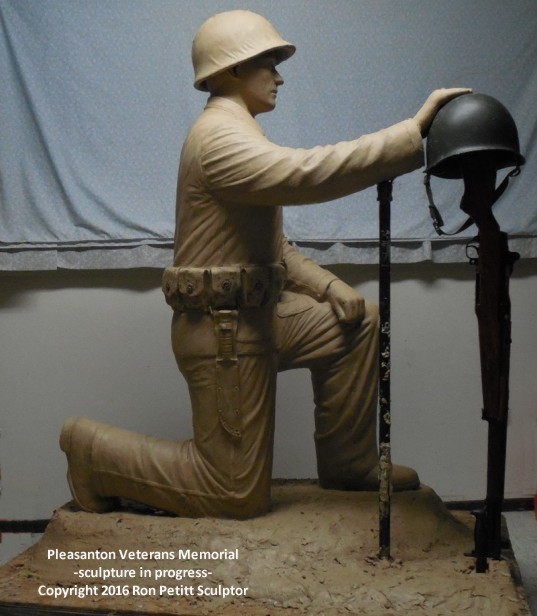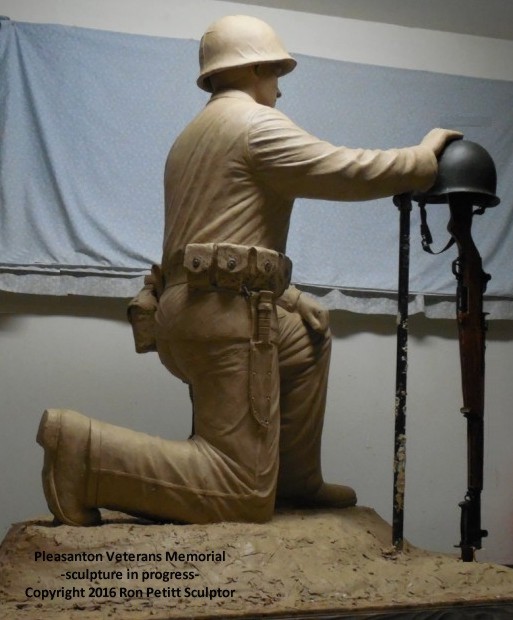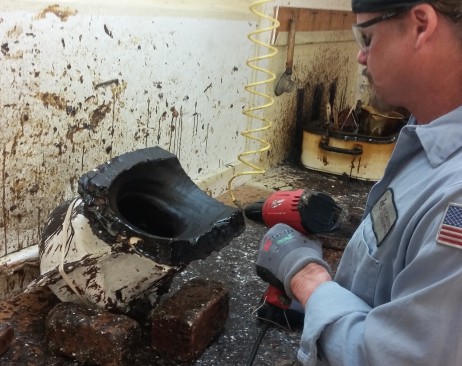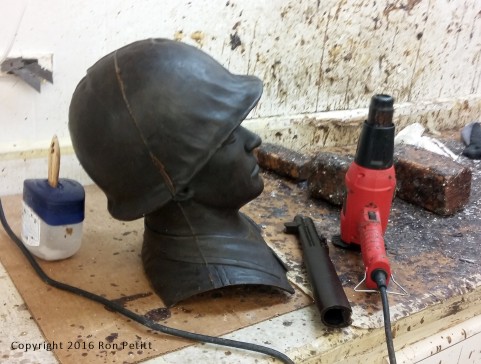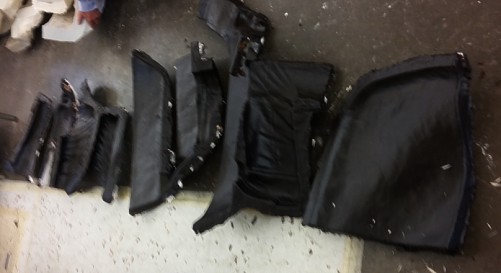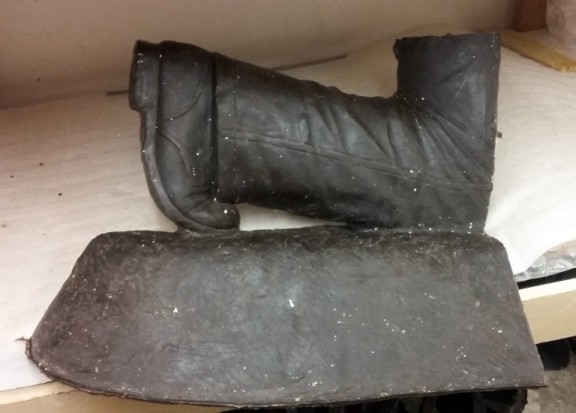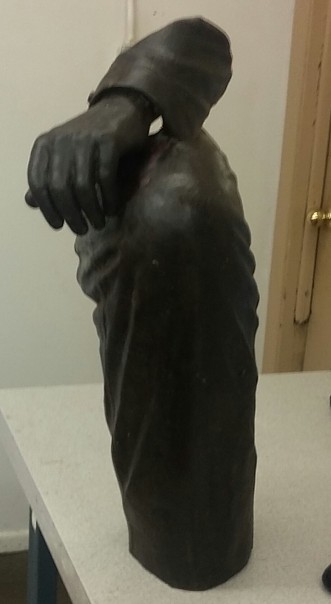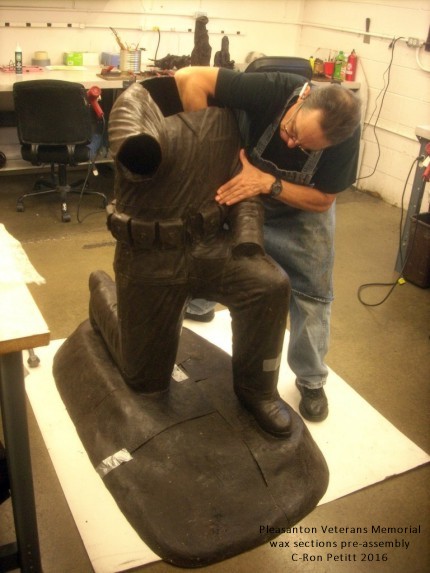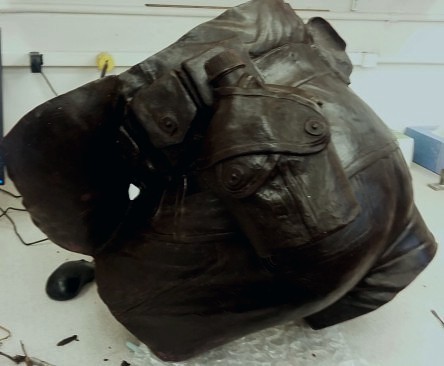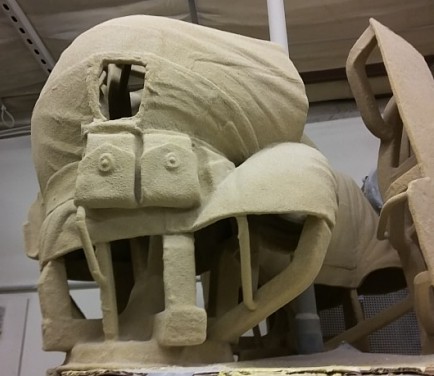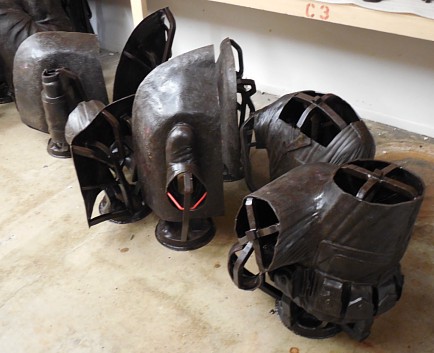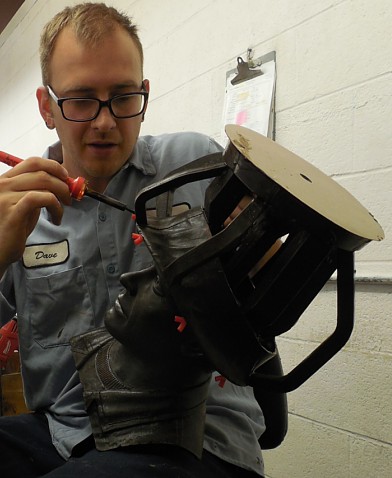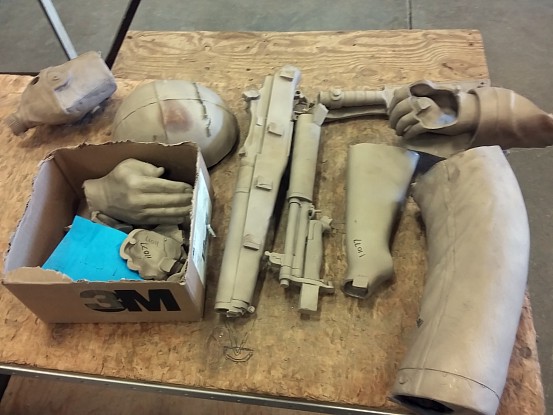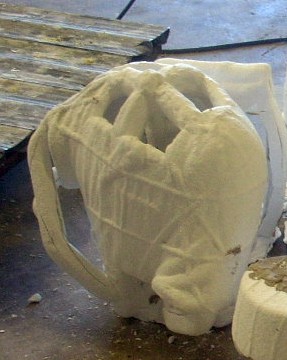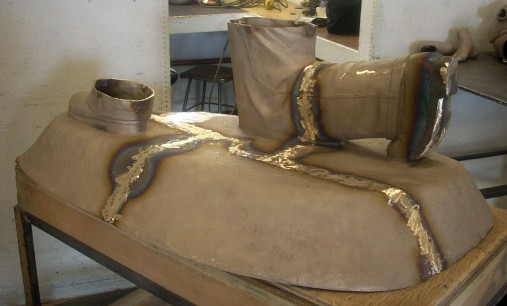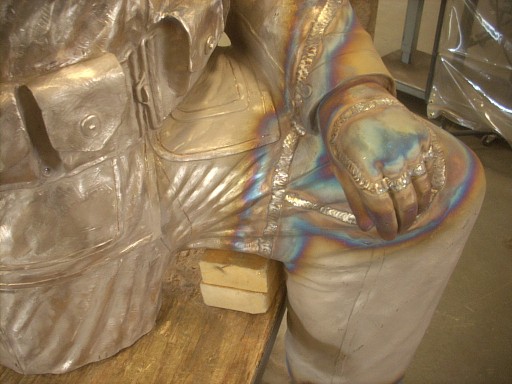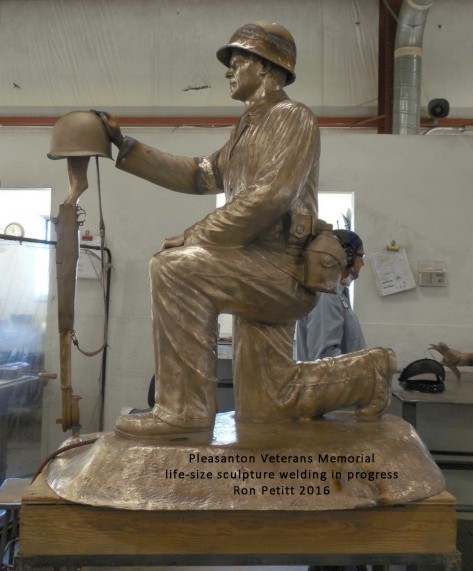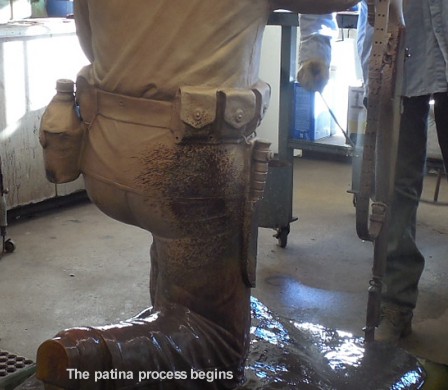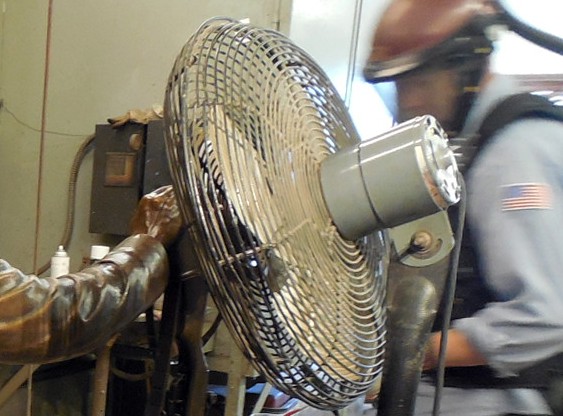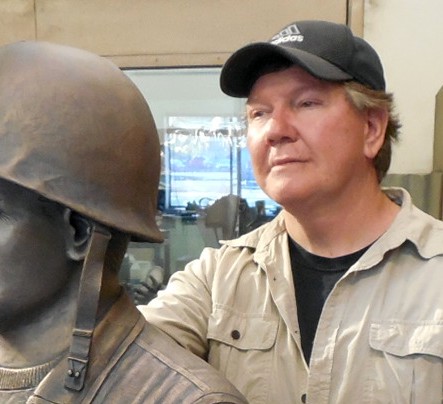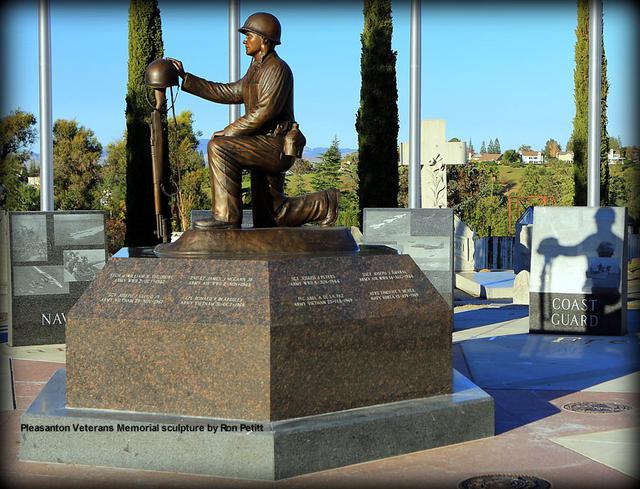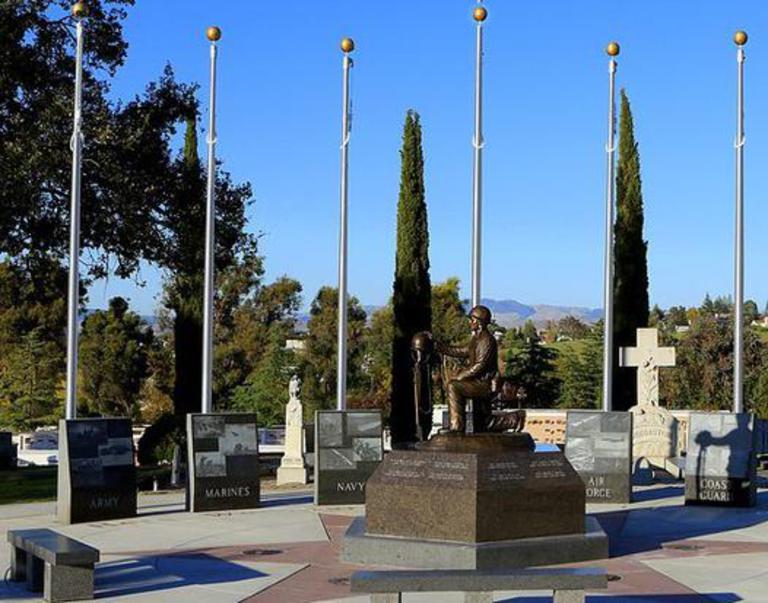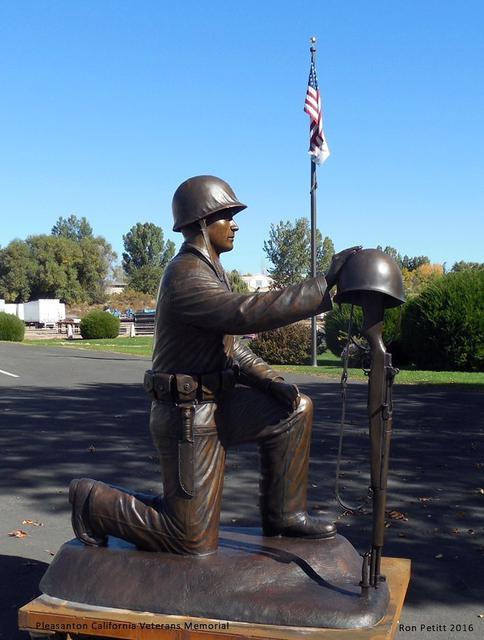THE PLEASANTON CALIFORNIA VETERANS MEMORIAL
Colorado Sculptor Ron Petitt has joined with the City of Pleasanton California in their plan to create a lasting tribute that will honor all military veterans. The Memorial which is located at the Pleasanton Pioneer Cemetery is a one-of-a-kind bronze sculpture, and is the centerpiece of the Memorial.
This original sculpture was commissioned by The City of Pleasanton California as a gift from the Veterans Organizations of Pleasanton.
The sculpture depicts a young WWII Marine, pausing to reflect on the days battle, the loss of friends and comrades, and the purpose of his continuing mission.
The final details are refined and preparations are made to start the mold making process
Shims are placed in the clay where sections will be made for casting. Three to 4 layers of special rubber mold rubber are brushed on, one coat at a time, and allowed to cure.
After the rubber is cured, a "mother shell" is created by using fiberglass mesh and a special high strength plaster. Again, multiple layers are added, one at a time. Once the plaster Is dry, the plaster shell and rubber mold sections are disassembled.
NOTE: All sculpture created by Ron Petitt is original, and no computer imaging, scanning or 3-D printing is used by the artist. Unlike much of the artwork currently available, all of Ron Petitt's work comes from the traditional hands-on method of creating by the artist!
All text, design and photos are copyrighted by the artist and may not be used without his express consent.
petittart@gmail.com
970-402-1950
A
After pouring wax into the mold, a foundry specialist heats and removes excess wax in the process of removing the cooled wax casting. This process is duplicated as each section of the sculpture is poured.
The cooled wax section is carefully removed from the rubber mold and inspected before it is moved to a cooling room to await the next step in the casting process.
Poured sections of the Pleasanton Veterans Memorial.
A large wax panel from the Pleasanton Veterans Memorial . Once all the panels are poured, they will be carefully examined for defects.
Once the individual sections are examined, they are assembled into larger components of the sculpture. The larger sections are then pre-assembled to make sure that each of the sections fit properly as a complete sculpture. Once the fit is confirmed, the larger sections are disassembled and prepared for the next step in the foundry process.
Once the wax chasing and assembly is complete, the castings move to the Sprue section, where wax tubes are added to serve as "gates" to allow the molten metal to flow evenly to all sections of the casting.
Once the Sprueing is complete. Each of the wax sections is dipped in a ceramic slurry that evenly coats the wax sections. These multiple layers will dry and eventually form the ceramic shell needed to pour the molten bronze.
After the wax sections are coated and allowed to air dry, they are placed in a large furnace where the heated wax flows out, leaving a negative space in the now hardened ceramic shell. Molten bronze is then poured into the shell and allowed to cool. The ceramic shell is then removed, revealing the bronze sections.
Once all the pieces are cast, they are welded together into larger sections that will eventually form the complete sculpture.
The life-size sculpture in the final steps in welding. From here, the welds will be "chased" and the straps will be added to the helmets. The sculpture will then be sandblasted to an even finish, any defects corrected, and the patina will be applied.
Artist Ron Petitt carefully checks each step in the patina process to insure that the finish will match the vision he has for the completed sculpture.
The finishing steps include a light coating of clear lacquer, and a protective wax applied and buffed.
The Pleasanton Veterans Memorial was dedicated on Saturday, November 12th, 2016.
THE PROCESS FOR CREATING THE PLEASANTON CALIFORNIA MEMORIAL
